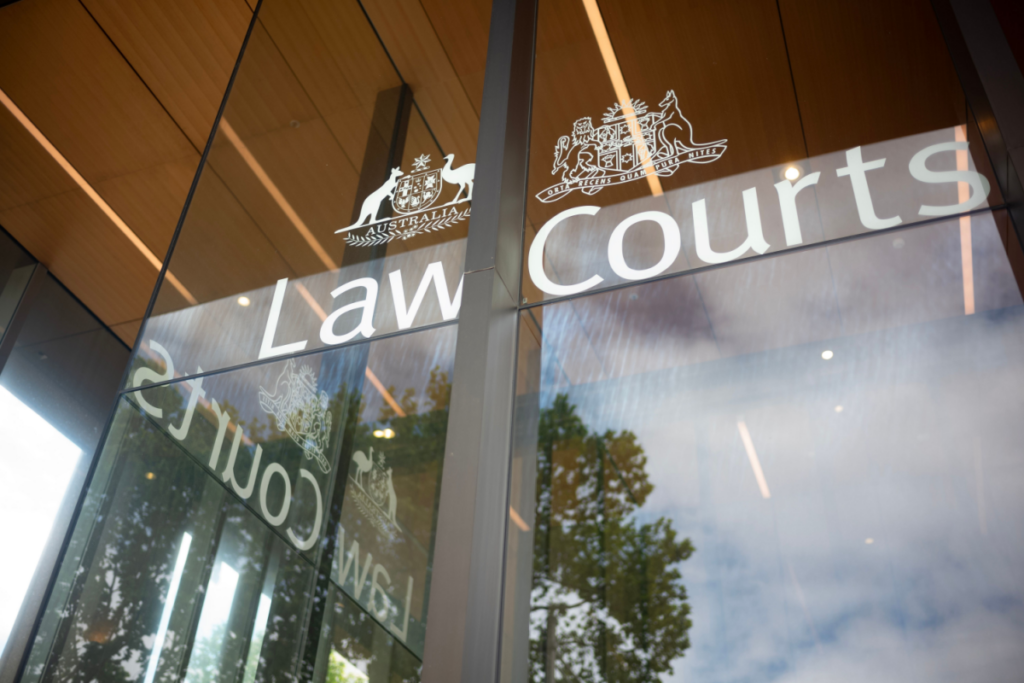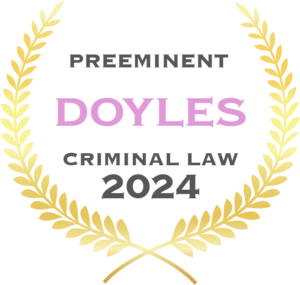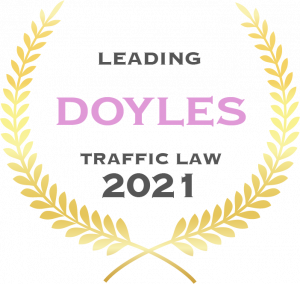“There is now reasonable doubt as to Ms Folbigg’s guilt.”
With those words, spoken by Chief Justice Andrew Bell in the Court of Criminal Appeal last week, Kathleen Folbigg, ‘Australia’s Worst Female Serial Killer’, has been acquitted of all charges.
The Case of Kathleen Folbigg
In 2003, Kathleen Folbigg was convicted of the murder and manslaughter of her four infant children – Caleb, Patrick, Sarah, and Laura Folbigg. The children died between 1989 and 1999, their ages ranging from 19 days to 19 months old. At the time, the possible causes of the deaths were recorded as SIDS for Caleb and Sarah, linked to epilepsy for Patrick and undetermined for Laura.
A criminal investigation began upon Laura’s death, leading to Ms Folbigg’s ultimate conviction. Ms Folbigg was sentenced to 40 years imprisonment with a non-parole period of 30 years after the jury agreed with the prosecution’s case that the mother smothered each of her children in a state of distress.
Kathleen Folbigg, however, always maintained her innocence.
After 20 years in which she exhausted each appeal option available to her, Ms Folbigg was unconditionally pardoned in June of this year after the preliminary findings from a second judicial inquiry gave rise to reasonable doubt as to her guilt.
This inquiry, headed by former NSW Chief Justice Tom Bathurst KC, revealed scientific evidence which was not available at the time of Ms Folbigg’s initial trial, signaling possible identifiable natural causes for the deaths of the four children.
Although she was finally free from jail after almost 20 years, this ‘royal prerogative of mercy’ did not have the effect of quashing the convictions against Ms Folbigg. Rather, it was a question for the Court of Criminal Appeal, who last week, in consideration of the findings of the inquiry, entered verdicts of acquittal.
And so, a quarter of a century after the tragic deaths of her children, Kathleen Folbigg has been named blameless.
Why Was Kathleen Folbigg Convicted?
'Meadow’s Law'
There was never any physical, pathological, or forensic evidence that Ms Folbigg’s children had been killed. Rather, the case was entirely circumstantial and relied heavily upon tendency and coincidence to reach its verdict beyond reasonable doubt. The coincidence rule and ‘Meadows Law’ were key in framing the case against Kathleen Folbigg.
The coincidence rule relates to evidence where 2 or more events occurred to prove that a person did a particular act on the basis that, having regard to any similarities in the events or the circumstances in which they occurred, it is improbable that the event occurred coincidentally (Evidence Act 1995 (NSW) s98).
‘Meadow’s Law’ refers to the reasoning that was applied to the coincidence arguments used in the trial against Ms Folbigg. ‘Meadow’s Law’ is a doctrine named for Sir Roy Meadow, a once prominent British pediatrician, who hypothesised that “one infant death is a tragedy, two is suspicious, and a third is murder until proven otherwise.”
This dogma became prominent in the UK in the 1990s when Meadow gave evidence in several trials where mothers were accused of murdering their children. One such time Meadow stated that the chance of two children dying as a result of SIDS was 1 in 73 million. This was proven to be incorrect upon an appeal, and other convictions based upon Meadow’s evidence were dismissed, all before Ms Folbigg’s trial commenced in 2003.
Regardless, and although it was never explicitly cited, Meadow’s Law was inherent in the reasoning applied to the coincidence evidence by the prosecution in Ms Folbigg’s trial: four natural infant deaths in one family had never been observed before, therefore, it was impossible to have happened in this case.
In conjunction with this reasoning, there were inaccurate testimonies by expert witnesses regarding the precedence of three or more natural infant deaths in one family.
Ms Folbigg’s lawyer, Rhanee Rego suggests that this line of reasoning, in effect, reversed the onus of proof in Ms Folbigg’s trial: Ms Folbigg was required to demonstrate natural causes because the default position was murder. In this way, Ms Folbigg was not granted the presumption of innocence: that is, “innocent until proven guilty.”
Chief Justice Bell was careful to say last Thursday that “While the verdicts at trial were reasonably open on the evidence available, there is now reasonable doubt as to Folbigg’s guilt.”
His Honour agreed with Mr Bathurst’s analysis from the inquiry, however, acknowledged that now an identifiable cause of the death has been found for at least three of the four Folbigg children, “the probative force of the coincidence and tendency evidence is substantially diminished.”
In this way, the application of “Meadow’s Law” reasoning in 2003 was undone and reasonable doubt was established.
In her statement upon acquittal outside of court on Thursday, Kathleen Folbigg said, “the case against me was always about my diaries and Meadow’s law.”
Kathleen Folbigg’s Diaries
Ms Folbigg kept diaries during the time of the deaths of her children, and these became one of the leading pieces of evidence behind the Crown cases and subsequent conviction. Outside the courthouse last week, Ms Folbigg said this about her diaries:
“They cherry-picked words and phrases from my journals. These books contained my private feelings, which I wrote to myself. No-one expects those types of things to be read by strangers, let alone opinionated on. They took my words out of context and used them against me. They accused me of something I never wrote about, never did, and never would do.”
Passages in Ms Folbigg’s diaries were considered at face value by the Crown and taken to be admissions of guilt. However, Ms Folbigg always maintained, that these entries were nothing more than a reflection of her grief and guilt over feeling like she must have been a bad mother.
On sentence, appeal, and the first inquiry, Ms Folbigg’s diaries were interpreted on their words alone and Ms Folbigg was not permitted to give comprehensive evidence upon her mental state while writing them.
With Bathurst’s report and the Court of Criminal Appeals decision, Ms Folbigg’s diaries were finally viewed in their full context, informed by expert psychological and psychiatric evidence – none of which supported their interpretation as reliable admissions of guilt.
What is the Appeal and Post-Conviction Review Process in Australia?
If you are convicted or sentenced in either the District or Supreme Court, you may appeal to the NSW Court of Criminal Appeal (NSWCCA). There is no “right to appeal” to the NSWCCA however, and you must obtain leave.
Appeals against decisions of the NSWCCA are made to the High Court of Australia. This occurs in matters of public or general importance, and you must persuade the High Court that special reasons to appeal exist. Decisions of the High Court upon appeal are final, and there is no further avenue of appeal.
Post-conviction review is generally available after a person has exhausted their court appeal avenues.
Two pathways may be followed by a convicted person seeking review: a petition to the Governor for a review of a conviction or a sentence and an application to the Supreme Court. Both pathways may result in an inquiry, being a special hearing convened to investigate the issue. Both avenues may result in the referral of the case to the Court of Criminal Appeal or no action at all.
After her trial in the Supreme Court, Ms Folbigg appealed to the NSWCCA in 2005 on a number of points. This appeal was unsuccessful, and Ms Folbigg sought special leave from the High Court of Australia in 2005 to challenge the decision, which was denied. Ms Folbigg appealed again in 2007 to the NSWCCA on new grounds, which was again unsuccessful.
Ms Folbigg first engaged the post-conviction review system in 2015 through a petition to the governor. After a few years’ delay this was ultimately unsuccessful until a new inquiry, heralded by new research around sudden death in children, was initiated in 2021 and eventually led to Ms Folbigg’s pardon.
Implications for the Future
Compensation
Ms Folbigg’s case creates the possibility of an unprecedented compensation payout. While she was not prepared to put a figure on it, Ms Rego confirmed after the acquittal last week that Ms Folbigg would be seeking compensation and that “it will be bigger than any substantial payment that has been made before.”
A New Post-Conviction Review System?
Outside the Court of Criminal Appeal, Ms Folbigg concluded: “We need to be humble and open to improving the system to ensure truth is revealed, because truth and correct legal outcomes matter.”
For some time, the Folbigg case has been a harbinger for discussions around, and rallies for, an updated post-conviction review process in Australia.
Ms Folbigg’s lawyer, Ms Rego, is one of a substantial body of other academics and legal professionals, calling for a dedicated, independent statutory body to be created to investigate claims of wrongful conviction modelled after the Criminal Cases Review Commission (CCRC). This review model is used in many jurisdictions around the world including the UK, NZ, and Canada. Ms Rego says this system could be adapted in Australia to ensure independence, transparency, accountability, and timely outcomes.
While every justice system is governed by fallible human beings, wrongful convictions can still happen, in spite of what is deemed a ‘fair’ trial and court appeals process.
Juries can never be totally immune from the power of suggestion, something that will become increasingly problematic in a world governed by social media, where the accused is put on trial even before setting foot in a courtroom. For this reason, and in light of Ms Folbigg’s acquittal, arguments for the adoption of an independent, post-conviction review mechanism in Australia seem more compelling than ever.
Key Takeaways
- Kathleen Folbigg was acquitted after being previously convicted for the deaths of her four children, raising doubts about her guilt.
- A second judicial inquiry revealed new scientific evidence, leading to her unconditional pardon and subsequent acquittal.
- The case was initially based on circumstantial evidence and the controversial "Meadow's Law."
- Folbigg's diaries were misinterpreted as admissions of guilt, a view later challenged by expert analysis.
- Her case underscores the importance of revisiting convictions with new evidence and may prompt considerations for compensation and a revised post-conviction review system in Australia.
Have You Been Charged With a Crimminal Offence in NSW?
The tireless work of her legal team to finally reach this outcome is an integral aspect of Kathleen Folbigg’s story. In the life of an accused person, the importance of being represented by a tenacious lawyer cannot be understated.
If you are being charged with a criminal offence in NSW, it is vital that you seek legal advice and legal representation. An experienced criminal defence lawyer will be able to advise you on how to proceed and assist you through every step of the process. Contact our expert Criminal Defence Lawyers now.
Written By

Drew Hamilton
Drew Hamilton is founding partner at Hamilton Janke Lawyers. Admitted to the Supreme Court of New South Wales as a Solicitor and also listed on the High Court of Australia register.




